The Philosophical Foundations of Classical Chinese Medicine
The Philosophical Foundations of Classical Chinese Medicine
Philosophy, Methodology, Science
Keekok Lee
LEXINGTON BOOKS
Lanham Boulder New York London
Published by Lexington Books
An imprint of The Rowman & Littlefield Publishing Group, Inc.
4501 Forbes Boulevard, Suite 200, Lanham, Maryland 20706
Unit A, Whitacre Mews, 26-34 Stannary Street, London SE11 4AB
Copyright 2017 by Lexington Books
All rights reserved . No part of this book may be reproduced in any form or by any electronic or mechanical means, including information storage and retrieval systems, without written permission from the publisher, except by a reviewer who may quote passages in a review.
British Library Cataloguing in Publication Information Available
Library of Congress Cataloging-in-Publication Data Available
Library of Congress Control Number: 2017937802
ISBN 978-1-4985-3887-9 (cloth : alk. paper)
ISBN 978-1-4985-3888-6 (electronic)
 The paper used in this publication meets the minimum requirements of American National Standard for Information SciencesPermanence of Paper for Printed Library Materials, ANSI/NISO Z39.48-1992.
The paper used in this publication meets the minimum requirements of American National Standard for Information SciencesPermanence of Paper for Printed Library Materials, ANSI/NISO Z39.48-1992.
Printed in the United States of America

Acknowledgments
Many acknowledgements are called for, indeed, too many, if every case were to be recalled here. However, there are a few which must be made. The first is to a friend and colleague without whose saintly generosity of spirit in helping me in the matter of computer graphics, this book would not have seen the light of publication, as this poor scholar simply could not rise (or be expected to rise) to become an IT expert; furthermore, the book, even if published (without the computer graphics), would be less than effective, as it would have to make do without the Xiang mode of presenting thought. The second is to Zhang Yu and Jiao Bin (Beijing Sanlitun Hospital); without their dedicated help and support, this book could not have been written. Last, but not least, I would like to thank Andriy Vasylchenko (Skovoroda Institute of Philosophy, National Academy of Sciences, Ukraine), for having co-authored with me, the section on Modern non-classical Logic and Yinyang/Yao-gua Implicit Logic in chapter 9, as well as for having made many helpful suggestions to improve clarity throughout the text. I am also grateful to all those, either in conversation or correspondence, who have made insightful comments and suggestions for improvements in the chapter(s) or fragments of chapter(s) shown to them. However, for any flaws and shortcomings which may still exist and, undoubtedly, do exist in this work, I take full responsibility for them.

Preface
This is a folk song recorded during the Han Dynasty by the Bureau of Music which had already been set up during the preceding, short-lived Qin dynasty. However, under the eager patronage of Han Wudi of the Western Han period who ruled from 141-87 BCE, the Bureau became very active and vigorous in implementing its remits, one of which was the specific one of collecting and collating folk songs. This means that the song was much older than the Western Han dynasty, and probably had existed for several centuries earlier.
This song talks about the passage of time. Time once gone is gone forever, like the waters of the rivers, which flow into the sea, never to return, like the green leaves of spring turning eventually yellow in the autumn, like the dew drops on the sunflower, which dry and evaporate as the sun grows stronger with the passing of the early morning cool. If in the vim and vigour of your youth, you fail to strive to realize your potential, to realize your various talents, then all that would be left for you in your old age is to sigh sadly with nothing to show for.
The moral is clear, but here one is not interested in this aspect, in this work, but in pointing out that the key tropes invoked in this folk song also happen to refer to the central concepts of Chinese philosophy /cosmology and also, therefore, of Classical Chinese Medicine (CCM):
- The daily rhythm of sunrise and (implied) sunsetthe sun in the morning is gentle and mild but gets hotter as the day wears on until in the late afternoon it gets weaker, eventually disappearing altogether by the very late afternoon/early evening. This is called the zhouye jiel . This rhythm in Nature is found in ourselves as we, who are living beings, obey, also that Law of Nature . (Needless to say, these are not mathematized as the laws of Nature are in modern sciencehence, to warn readers that they differ in this profound respect from their Western modern counterparts, this author has italicized the term when used in the Chinese context.)
- The yearly rhythm of the four seasons: spring and autumn only are mentioned in the folk song. However, in ancient Chinese literature, spring and autumn stand for the passage of the entire year, including summer and winter. This is the sishi jiel . This rhythm, too, is similarly found in ourselves and we obey that Law of Nature , too.
- CCM contains a key concept called tianren-xiangying () which includes the two Laws of Nature mentioned above.
- Spring is the time for the first stirring of life on Earth after the die-back of winter; summer is the time for all organisms to grow and develop; autumn is the time for trees to bear fruit and for young animals born in the spring to come to maturity; winter is the time for organisms to recollect themselves in rest and tranquillity, even for some to go into hibernation, in preparation for the next cycle in the renewal of life in the following spring. This in CCM is referred to as: chun sheng xia zhang qiu shou dong cang . Qi () in greater Nature undergoes these four phases in the process of transformation and change; these phases are found in every living organism, including ourselves.
- The four seasons, involving the phases of change and transformation of Qi in the annual cycle, secure the conditions for all life, ensuring the continuity of life forms on Earth. The folk song tells us that this cycle is a gift from Nature or in ancient Chinese terms from Heaven tian and Earth di , for which we must be deeply grateful, . A key text of CCM, the Huangdi neijing says that wanwu (the myriad things) are the children of Heaven and Earth (Nature), and that Heaven and Earth look after us, as parents look after their own children.
- The song refers directly to the Sun ( ri ) and talks indirectly about the sky or the heavens abovethe Sun in the heaven/sky above gives forth warmth and light, that is, energy which provides the conditions essential for life.
- The song also uses the character/word yang , which is another term for the Sun. However, yang does not simply stand for Sun but also for yang qi , one of two types of Qi . The song also refers to the water ( shui ) in rivers () and the sea () on our planet Earth. In Chinese philosophy /cosmology and CCM, water and Earth belong to yin , and so are about yin qi . In other words, the song implies the concepts of yin qi and yang qi as well as yinyang which constitute the central concepts of Chinese philosophy /cosmology and, therefore, of CCM.
- The themes referred to at 4, 5, 6, and 7 above may be found in a passage of the Huangdi neijing , Chapter 5, which reads: , , , , , , ( .. ). This author renders it as follows: Yinyang constitutes the dao of Heaven and Earth; it embraces wanwu within its order and its laws; it is the source of all changes as well as the very foundation of life and growth; it is where the spirit dwells. The physician, in order to heal the sick, must always cut to the root of the illness in terms of yinyang and restore its balance in the individual.
Next page
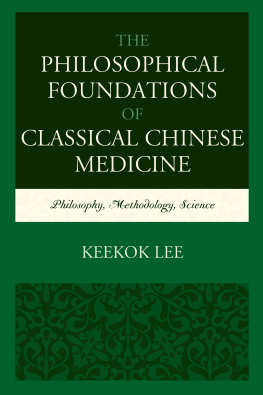

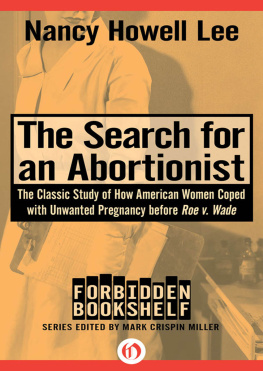

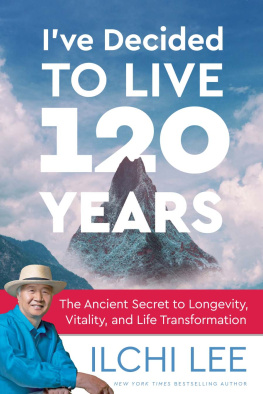
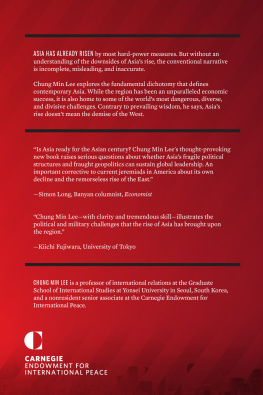

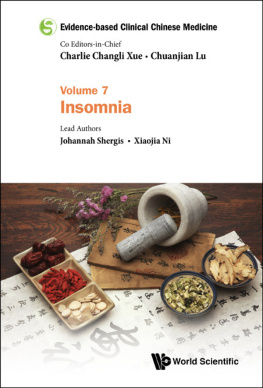



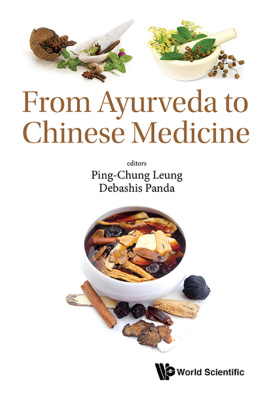
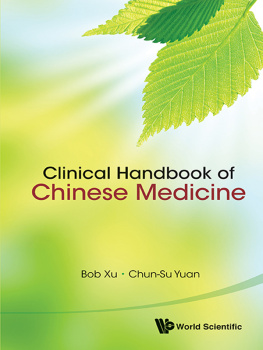
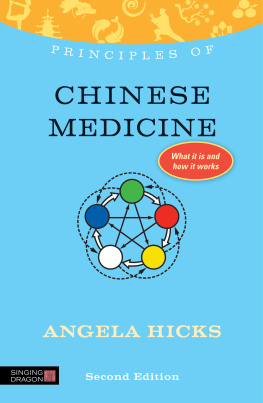
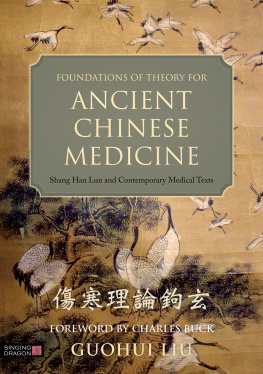
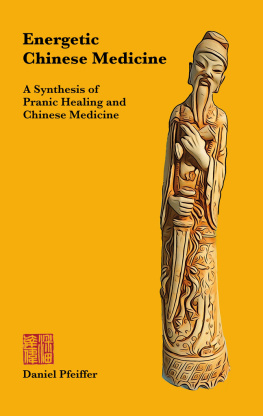
 The paper used in this publication meets the minimum requirements of American National Standard for Information SciencesPermanence of Paper for Printed Library Materials, ANSI/NISO Z39.48-1992.
The paper used in this publication meets the minimum requirements of American National Standard for Information SciencesPermanence of Paper for Printed Library Materials, ANSI/NISO Z39.48-1992.